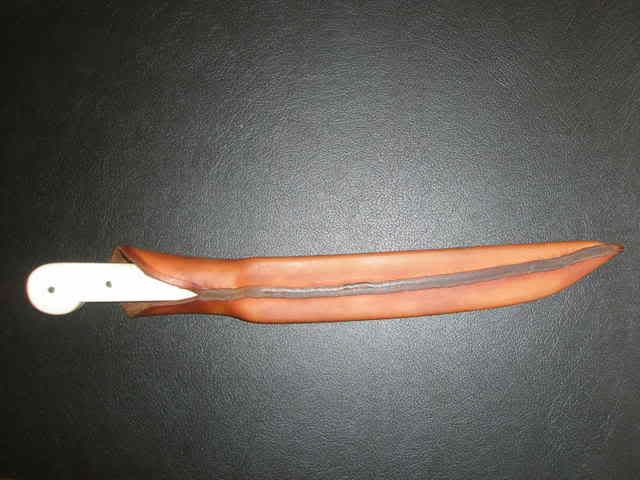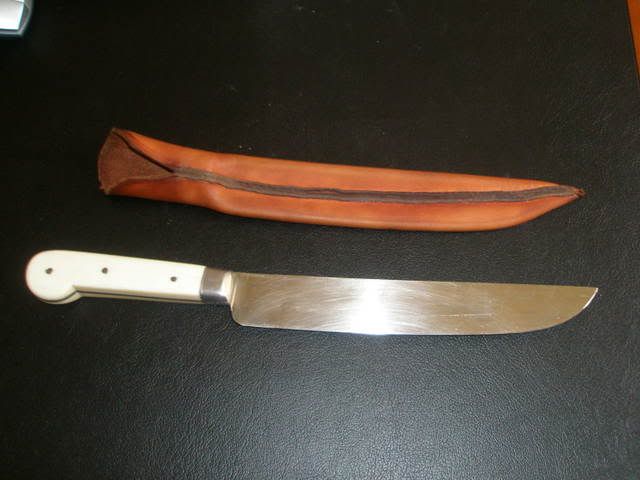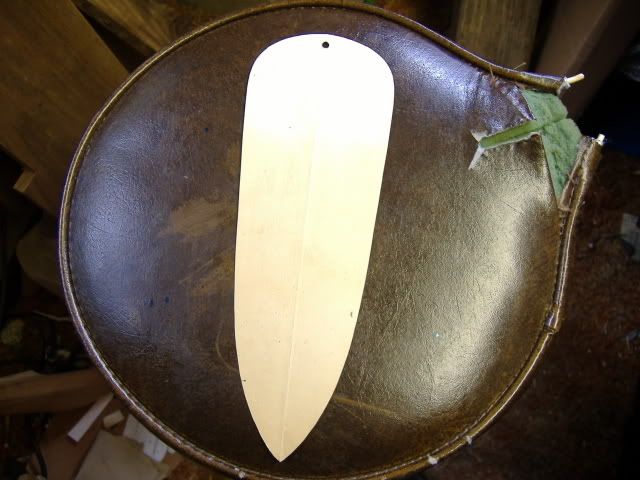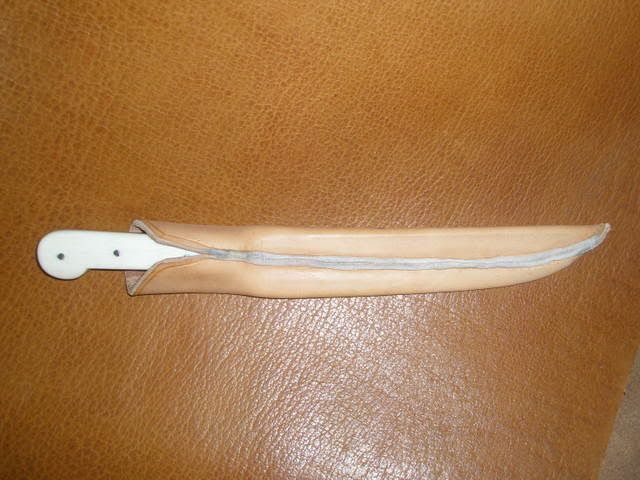Wick? Did I say the word, Rivet???? :shocked2: :rotf: :thumbsup: Any time I can help you out like this, just let me know!! :rotf: :rotf: :rotf: :hatsoff:
Actually, I was thinking of sewing the lower end onto the sheath, before forming and sewing closed the seam. I was thinking about just leaving the stitching thread hang loose during the forming and sewing of the centerseam. Then, the upper end of the loop could be sewn to the top end of the sheath, with that V-cut you have artistically made in your seam allowing a need to get into the sheath to feed the thread through pre-cut( leather punch, awl, etc.) holes.
Actually for a blade that is 6 inches and longer, I like a sheath that can be worn across the width of the back, with the belt holding the sheath to the body, and a long " drop loop" attached near the bottom of the sheath, and a " keeper " loop attached near the top of the sheath, both attached to the belt. That helps the knife stay in position, for a very easy and quick draw to the side. Depending on how long the blade is, and how wide a person is, the knife can be well concealed behind the back, rides in the small of the back so it doesn't pose a hazard or a pain when sitting, yet can be reached with a subtle movement to scratch a kidney, or stuff a shirt tail into your pants. My sheath is designed so that the edge of the blade is UP in this form of carry. Shorter knives are carried in a vertical position and the blade goes into the pocket of my jeans, to keep it from catching on things, or being seen very well. Most of my working knives have blades less than 4 inches long.





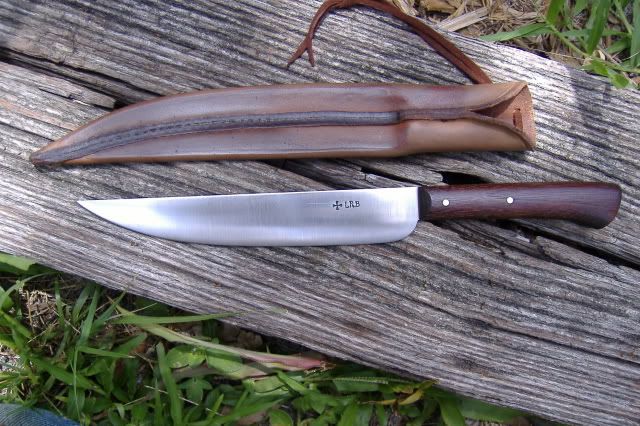
 Long tined needle nose plyers could get the rivet in place, then a piece of steel bar slipped in over it, hammer it down on an anvil with a piece of heavy paper to protect the off side. Very good Paul, I thankyou. :hatsoff:
Long tined needle nose plyers could get the rivet in place, then a piece of steel bar slipped in over it, hammer it down on an anvil with a piece of heavy paper to protect the off side. Very good Paul, I thankyou. :hatsoff: